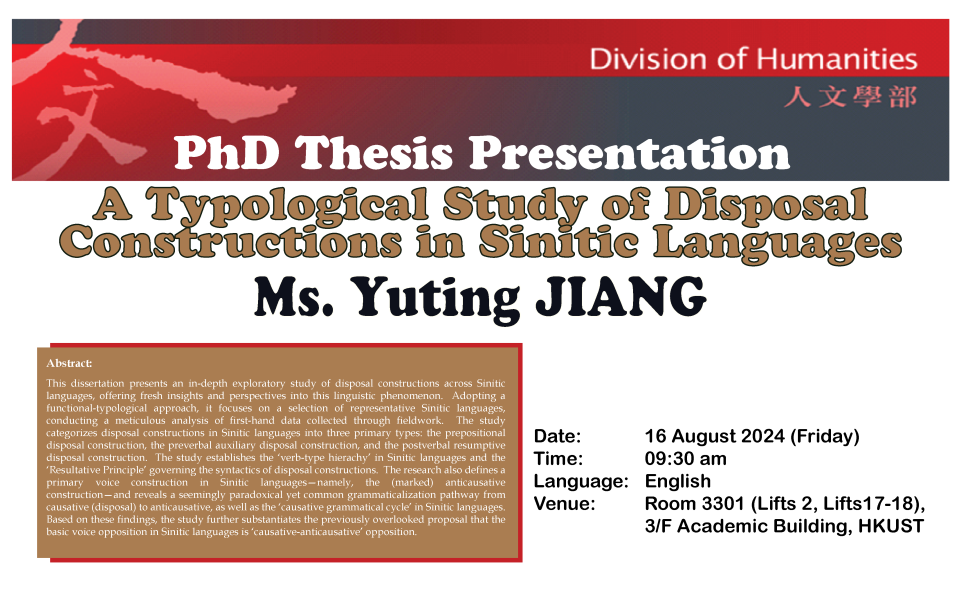Abstract:
This dissertation presents an in-depth exploratory study of disposal constructions across Sinitic languages, offering fresh insights and perspectives into this linguistic phenomenon. Adopting a functional-typological approach, it focuses on a selection of representative Sinitic languages, conducting a meticulous analysis of first-hand data collected through fieldwork. The study categorizes disposal constructions in Sinitic languages into three primary types: the prepositional disposal construction, the preverbal auxiliary disposal construction, and the postverbal resumptive disposal construction. The study establishes the ‘verb-type hierarchy’ in Sinitic languages and the ‘Resultative Principle’ governing the syntactics of disposal constructions. The research also defines a primary voice construction in Sinitic languages—namely, the (marked) anticausative construction—and reveals a seemingly paradoxical yet common grammaticalization pathway from causative (disposal) to anticausative, as well as the ‘causative grammatical cycle’ in Sinitic languages. Based on these findings, the study further substantiates the previously overlooked proposal that the basic voice opposition in Sinitic languages is ‘causative-anticausative’ opposition.
